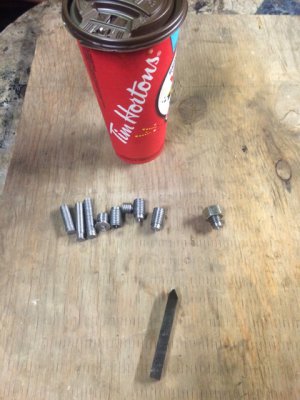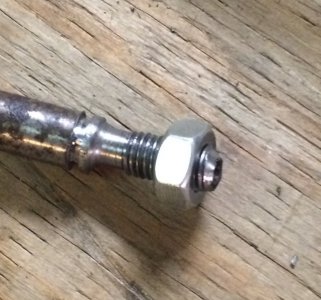Yeah, that's what I'm doing, and I've watched a bunch of youtube videos on doing it. Using a HSS bit, larger stock and a faster speed has mostly eliminated the tearing [it'll look bad after the 'bad' cut (when it takes off a big part of the thread), when the saddle seems to have shifted over a bit for whatever reason].
I'm pretty close to getting it right, it'll get 80% of the way done, then it seems like the saddle jogs over just a smidge and I get pointy threads. Next time I'm going to try using the carriage handwheel to take up the slack in the threading screw before each pass.
Doing the reversing thing instead of releasing the half nut/using the thread dial is working ok for me, one less thing to get wrong, and I have to do this anyway when I get to doing metric threads.
Fixing the shear pin definitely helped [as I could move the thread screw laterally with the carriage handwheel with the halfnut engaged and the saddle against a stop].
Using layout dye sounds like a good trick I'll have to try, I'll have to go get some.
I'm pretty close to getting it right, it'll get 80% of the way done, then it seems like the saddle jogs over just a smidge and I get pointy threads. Next time I'm going to try using the carriage handwheel to take up the slack in the threading screw before each pass.
Doing the reversing thing instead of releasing the half nut/using the thread dial is working ok for me, one less thing to get wrong, and I have to do this anyway when I get to doing metric threads.
Fixing the shear pin definitely helped [as I could move the thread screw laterally with the carriage handwheel with the halfnut engaged and the saddle against a stop].
Using layout dye sounds like a good trick I'll have to try, I'll have to go get some.

 Steve Shannon
Steve Shannon 
